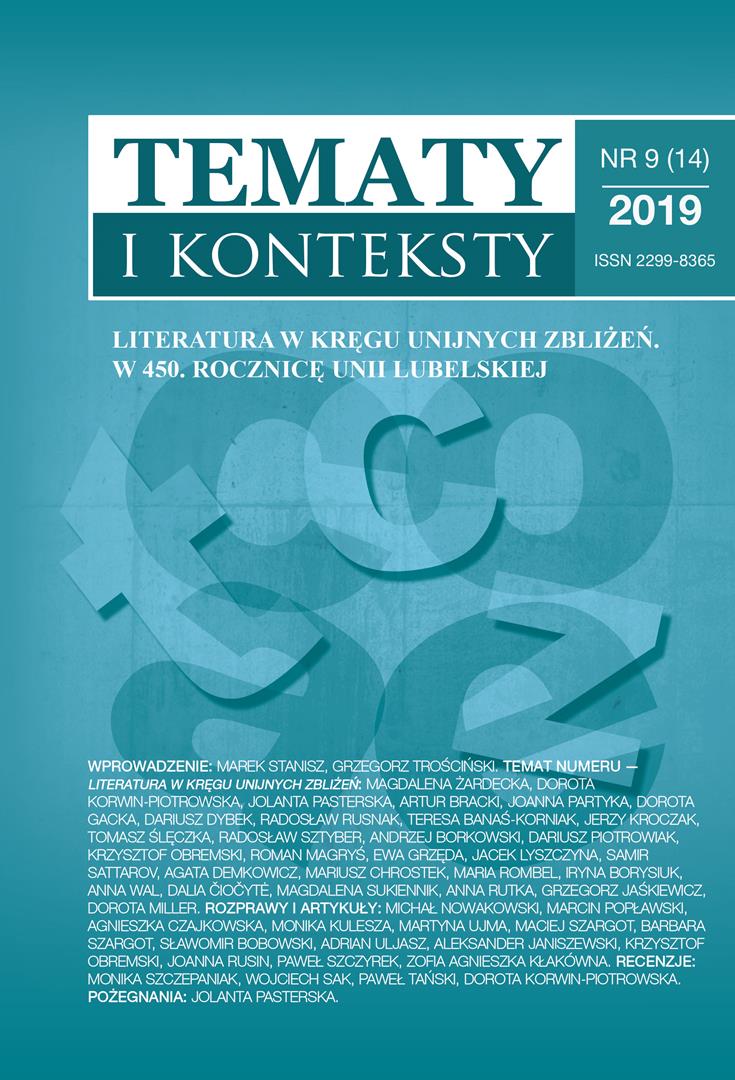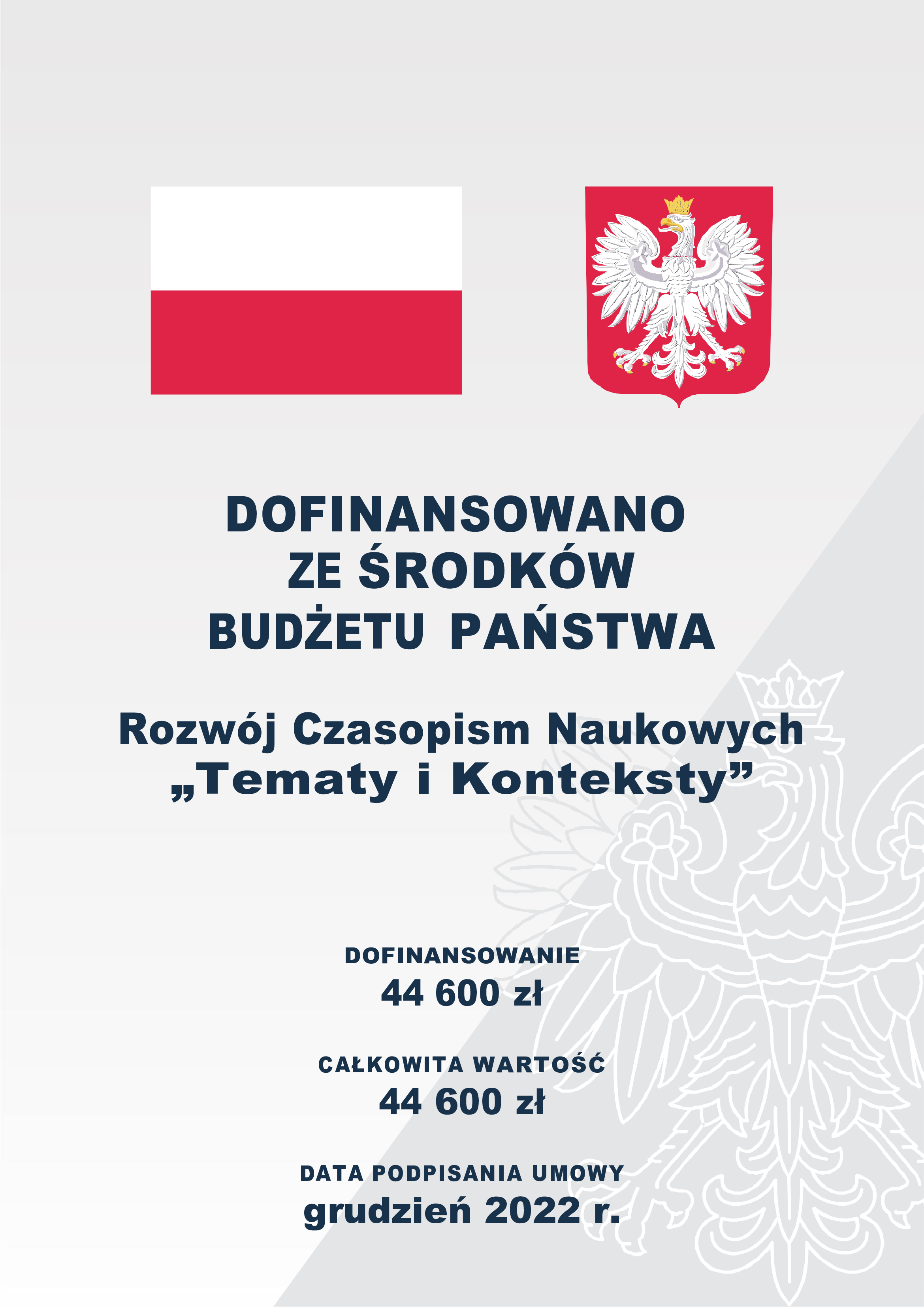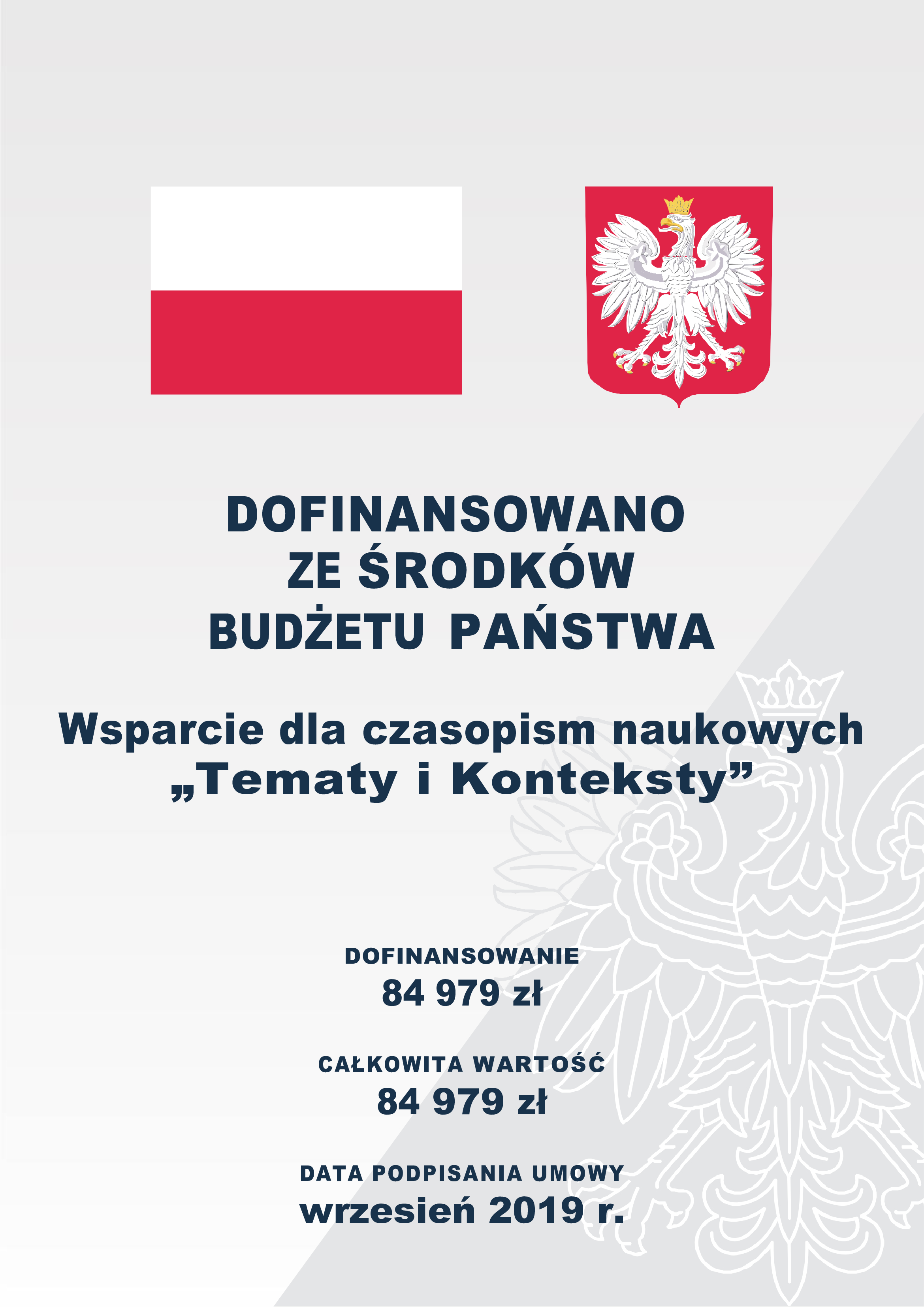Saksonia i Saksończycy w świetle pamięci o uniach polsko-saskich w wybranych relacjach pamiętnikarskich Polaków z pierwszej połowy XIX wieku
DOI:
https://doi.org/10.15584/tik.2019.18Słowa kluczowe:
unia personalna polsko-saska, pamiętnikarstwo, podróżopisarstwo, historia, literaturaAbstrakt
This present paper is an attempt to trace the reception of the Polish-Saxon relations (in a polonized Polish-Saxon version) in the first half of the nineteenth century, recorded in selected memoirs and epistolary notes from that period. The point of reference in this case is the historical personal unions between Poland and Saxony, i.e. the history of political relations. The basic subject of the analysis are the interpersonal relations between Poles and Saxons in the post-partition period, at a time when there were about 10,000 Poles in Saxony seeking asylum after leaving the Polish lands during the November Uprising, and the ways of taming the space characterized by the signs of the common political past. The memory of Polish-Saxon personal unions seems to have made it easier for Poles to adapt to the new social and even linguistic situation. As it appears, the interest of Poles in Saxony at that time was not only limited to seeking political asylum, but also had a tourist and cognitive dimension. Poles discoverd Saxon Switzerland and learned how to do mountain tourism before going to their native Tatra Mountains. The basis for this paper is a selection of accounts and diaries of Andrzej Edward Koźmian, Józef Ignacy Kraszewski, Klementyna Hoffmanowa nee Tańska, Juliusz Słowacki’s correspondence and Stanisław Deszert’s manuscript journal.
Downloads
Pobrania
Opublikowane
Jak cytować
Numer
Dział
Licencja
Prawa autorskie (c) 2019 Tematy i Konteksty

Utwór dostępny jest na licencji Creative Commons Uznanie autorstwa – Użycie niekomercyjne – Bez utworów zależnych 4.0 Międzynarodowe.




